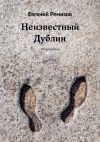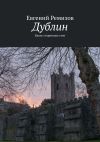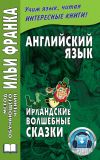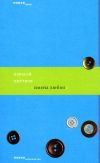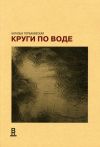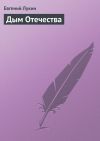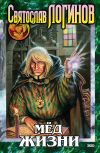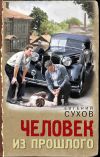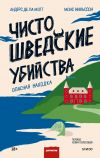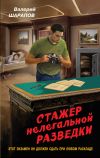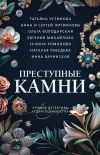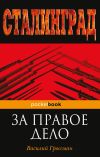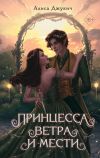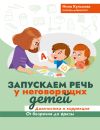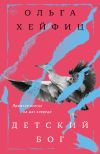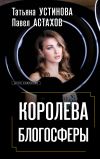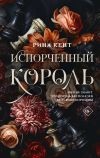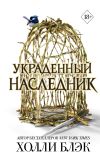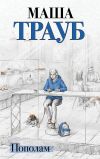
Автор книги: Татьяна Михайлова
Жанр: Культурология, Наука и Образование
сообщить о неприемлемом содержимом
Текущая страница: 11 (всего у книги 12 страниц)
УКАЗАТЕЛЬ ИМЕН МИФОЛОГИЧЕСКИХ ОБРАЗОВ И ИСТОРИЧЕСКИХ РЕАЛИЙ
Аверинцев С. С. 54, 55, 89
Адарк 102, 103
Айлиль 43, 47, 48, 92, 94, 116 Айфе 84, 110
Александр Север 74 Аморген 87 Анима 31 Артур, король 118 Атирне 123
Аэ (Ауэ) 102, 103
Аэд Финдлейт 143 Аэдан 96
Бадб 9, 12, 32—34, 59, 60, 62,
66, 69, 70, 74, 84, 86, 88
Байбурин А. 117 Банба 87
банши 9, 21, 62, 74, 88, 124
Белова О. 112 Бергин О. 132
Бинчи Д. 10, 149, 155, 156, 158,
159, 163, 164
Биркхан X. 74, 90, 97 Бирн Ф. 128, 129
Блатнад 25 Блодвед 25
Боанд 19, 40
богиня–праматерь 28
Болг 95
Борч Ж. 7, 33, 49
Боудик(к)а 10, 11 Братнох Л. 165
Бриан Бору 70—72, 86, 87, 129,
132—135, 137, 142, 148
Бригита 16, 78
Британия 24, 29, 36, 44, 46, 63, 65, 75, 77, 83, 95, 112, 123
Бродир 135
Бурк А. 16
бычий праздник 79, 80, 87 Бьорк 12, 13
Вагнер Г. 40 Вагнер X. 86 Вальдхеов 29 вампир 22, 110 Ван Хамель А. 62, 82 Вандриес Ж. 164
ведьма 15, 30, 60, 63, 65, 67, 95, 96
Веледа 90, 97, 98
Вельва 56
верховный трон 85, 127, 128, 130,
133, 140, 142, 148
Верцингеторикс 135
викинги 71, 72, 128, 129, 131—
134, 138, 148
власть 20, 27—29, 33, 39, 68– 70, 85, 86, 87, 89, 119, 120, 132, 135—137, 139, 140, 142, 143, 148
вода 28, 59, 62, 64
воительница 64—66, 72 волк–оборотень 73, 149, 160—163
волосы 21—23, 26, 30, 32, 33, 35, 40, 76, 107, 112, 118, 159
Вольфрам фон Эшенбах 118 Вратнах М. 20, 32, 34, 35
1 Имена современных авторов выделены курсивом.
Г амкрелидзе Т.В. 57
гейс 19, 20, 69
гениталии 33, 35, 36, 107 Гётинк Г. 33, 119 Гиральд Камбрийский 27 Гисли 30
Горбовский А. А. 56 Горм(ф)лат (собират.) 18, 126,
127, 140, 142, 143, 147
Горм(ф)лат, аббатиса 142 Горм(ф)лат, дочь Доннхада
127—130, 132, 143, 148
Горм(ф)лат, дочь Мурхада мак
Финна 129, 130, 132—138, 147
Горм(ф)лат, дочь Фланна Шинны 130—132
Горм(ф)лат, жена Тайрделбаха
142
Горм(ф)лат Пестрая, дочь Ми–редаха 143
Грин М. 9
Грону 25
Гудхер А. 70—72, 134, 135, 137
Гюйонварх Кр. 73, 78, 81, 84
Даггер К. 39, 126 Дагда 78, 146
Де Клэр Ричард 64, 74
Дейрдре 100, 101, 103, 104, 116, 117
Джонстон Э. 33
Диармайд мак Кербалл 35, 85
Диоклетиан 73
Доббс М. 93
до–гойдельское население 10, 22,
72, 112
Домналл, сын Аэда 107, 143 Доннха, сын Бриана 62, 63, 70,
134, 142
Дорнолла, дочь Домналла 107,
108, 110, 112 друид 14, 45, 47, 58, 62, 73, 76, 89, 90, 100
Дули Э. 53, 54, 89, 94
Жапризо С. 41 жена–сида 17
женщина у брода 21, 23, 32, 59,
60, 62, 64, 70, 88
женщины–друиды 73, 78 жертвоприношение 30, 75, 82
заклинание 14, 49, 79, 91, 152 заклинательница 65, 73, 95, 101,
120, 122, 152, 154, 156, 164 золото 23, 26, 65, 76, 96
Золотухина Е. 119 И ванов Вяч. Вс. 57
Ивил 70, 86—88
имбас форосны 44, 53, 55, 78,
80—84, 93, 106, 113 Ингкел 19, 77
Иной мир 14, 19, 21, 23, 37, 39, 45, 58—60, 65, 72, 79, 81, 82, 85, 88, 90, 112, 113, 117
Иейтс У. Б. 67
Кайльб 19, 20, 33—35, 37, 38,
41, 58, 60, 107
Кайрпре Ниафер 92, 94 Кали 37
Калыгин В. П. 57, 78, 80, 83 Капплер К. 111, 112 Картимандуа 10 Кассандра 54
Катбад 62, 100
Келли Ф. 7, 154
Кербалл мак Лурехан 130—132
Киаран св. 85, 129
Клери Бриджет 16, 17
Клери Майкл 16, 17
колдовство 16
колдунья 15, 42, 98, 152, 154, 156, 160, 164, 166
колесница 46, 47, 59, 65, 66, 76 Коллах 88, 122 Коллум Киле св. 40
Конайре 19—21, 33—35, 58 Коналл Корк 95, 96 Конн Ста битв 64
Конхобар 88, 92—95, 100—105, 113—115, 117, 120
Кормак мак Куленнан 78—82,
97, 130, 131, 137, 148, 162
Кормак, сын Конхобара 32, 41,
59, 69, 74, 101
Кормлёд см. Горм(ф)лат, дочь
Мурхада Королев А. А. 97
королева 29, 43, 47—51, 53, 66, 76, 78, 82, 88, 90, 91, 97, 99, 122, 126, 127, 129—133, 140, 142, 147, 148
красный (цвет) 22, 23, 28, 30,
31, 43, 44, 49, 55, 64, 66, 71, 72, 86, 88, 95, 96, 99, 107, 112, 137, 138, 140
Кретьен де Труа 118
кровь 32, 33, 43, 49, 54, 59, 60, 62, 64, 67, 70, 80, 88, 90, 149
Кросс Т. П. 57, 92, 107, 111
Ку Рои 25
Кук Дж. 90, 95, 98
Кумасках, сын Айлиля 143 Кундри 118, 119
Кухулин 25, 38, 40, 52, 60—62, 66, 72, 77, 82—84, 88, 92, 95, 102—104, 107, 108, 110, 112, 115, 117, 122
Кэри Дж. 7, 40, 66, 81, 82
Лайсафт П. 9, 62, 64 Ламбер П. И. 98 Ларь–Руад 95
Ле Ру Фр. 73, 78, 81, 84
Леборхам 18, 100—108, 110, 112—120, 122, 124, 125
Леборхам Ранах 102
Лежен М. 98
лес 15
лиминальность 11, 15, 18, 112, 113,
117
Ллеу 25
Лойгайре 92—94, 96
Лотман Ю. М. 145 Лоэг 82
Луайне 104, 114, 117 Луг 38
Лугайд, король 95
магия 63, 72, 91, 122, 152, 156, 158
Майер Р. 119
Мак Кана Пр. 32
Мак Кон К. 68
Мак Нил Э. 10, 12, 97
Мак–Кензи А. 12
Маколайф М. 133
мантика 55, 57
Маха 9, 114
Маэльморда 132, 134 Маэль–Сехналл II 133
Медб Летдерг 28, 140
Медб, королева Коннахта 28,
43—53, 58, 66, 67, 74, 76—
78, 81, 82, 84, 88, 90—92,
94, 99, 122, 140 медиатор 14, 52, 73, 84, 85, 90,
91, 110 Мейер К. 82
Мес Бухалла 21
Мидир 39
Миредах Шотландец 71, 143 Молинг св. 113 Монган 96
монструозность 37, 60, 104, 106—
108, 110, 112, 118 Морриган 9, 38, 62, 86 Моц Л. 37
мудрость 34, 57, 97 Муйрхертах, сын Эрк 26, 27, 34 Мурхад, сын Бриана 70, 72, 134
Надь Дж. 101, 113
Найси 101, 103, 104, 110 Неде 105
Немайн 9, 34 Ни Вини М. 137 Ни Хоннхада М. 132 Ниав 12
Ниалл Глундуб 131, 132, 137, 147 Ниалл Кайлле мак Аэда 127—
129, 131, 132, 143
Ниалл–девять–заложников 28, 32,
147
Николаева Н.А. 23 Нотт Э. 35
О’Браен Доннха 62, 63 О’Кахасгл Т. 40
О’Коррайн Д. 10, 12, 140, 142 О’Рахилли Т. П. 39, 78, 80, 83,
92
О’Хогайн Д. 70 Олаф Куаран 132, 133 Олег, князь 51
П арцифаль 118
Патрик св. 14, 80, 82, 91, 96
Передур 118 Перзигу Ж. 94 Персеваль 118 пикты 10
питье, напиток 28, 29, 86, 87,
139, 140, 143, 147, 148
Пирс Руа Батлер, граф Ормонд 138
плач (ритуальный) 122, 124 подменыш 15—18 Подосинов А. В. 50 полигамия 10
поэтесса 44, 53, 54, 77, 78, 83,
84, 89, 94, 95, 130, 158
прачка–у–брода, см. женщина у брода
прецедентное имя 147, 148
Приходько Е. В. 54, 56, 57
проклятие 49—51, 59, 73, 87, 94, 98, 114
Пропп В.Я. 52
пророчество 32, 34, 43—45, 47,
49—55, 58—60, 66, 70, 76, 77, 82—87, 89—91, 94, 97– 99
процессы против ведьм 166
Пушкин А. С. 51
Рис А., Б. 28 Рис Дж. 22
Рихес 122 Ронан св. 113 Росс Руад 92
Росс Э. 35, 36
Ротниам 85, 88
Руднев В. П. 58
рыжий цвет (волос) 22, 23, 107,
112
свадьба 28, 29
Сенха, сын Айлиля 116
Сива 64, 65, 72
Сигурд 135
сид 15, 21—23, 26, 27, 39, 47—
50, 72, 159, 160, 166 сида 16, 23, 27, 34, 54, 73, 88,
90, 91, 94 Симмс К. 7, 148, 166 Син 19, 26, 35, 37, 38, 41, 72
Ситрик (Сигртрюг) 133, 135
Скатах 66, 83, 84, 88, 110
смерть (гибель) 19—21, 23, 25—
27, 29—33, 36, 52, 61, 73, 84, 86, 91, 99, 121, 122, 124, 125, 149, 153, 154
Смирнов А. А. 101, 103, 116, 120
сон 30, 55, 81
Сорлен Э. 9
социальный статус женщины 10
старуха 19, 28, 30—33, 35, 42, 58, 60, 62, 73, 104, 107, 108, 119, 120, 136
Стоукс В. 35 Страбон 90
судьба 27, 29, 33, 34, 45, 49, 69, 76, 89, 91, 119, 126, 133, 145– 147
Суибне Безумный 113, 114
супруга 26, 39, 87, 93—95
супружеская верность 131, 142
Тайрделбах, сын Тайга 142 Танатос 31 Тара 28
Тацит 90, 112
Тирехан 96 Тихомиров В. 132 Томпсон С. 111 Топоров В. Н. 145 Топорова Т. В. 56 трикстер 117, 120, 125
Триндад Э. 126, 127, 129—132, 137, 140, 143, 148
Турнейзен Р. 80, 107 У атах 83, 84, 110
Улих Ю. 139
Успенский Б. А. 145 Успенский Ф. Б. 147
Федельм 18, 43—45, 47, 49—
58, 64, 66—68, 74, 76—78, 81—84, 87—92, 94, 96, 98, 99, 106
Федельм Девять Сердец (обликов), дочь Конхобара 92—95 Федельм, «ведьма» 95, 96 Федельм (Рыжая), дочь Лойгайре 96
Федельм, жена Лойгайре 93, 94 Федельм, жена Элкмара 93, 95 Федельм, жена Эохайда 96, 97 Федельмид Мак Кримтанн 127—
132, 137, 143, 148
Фергус мак Ройх 88, 101, 146
Фетан 88, 122
филиды 55, 77, 78, 82, 87, 88,
97, 121
Финген 85 Финн 62
Фланн Шина 130, 131
Фодла 87
Фрейденберг О. М. 145
Харрисон А. 117 Хеннеси В. 129 Херберт М. 7, 68 Хольмер Н. 40
цветок 23—25 Цезарь 74, 90
чудо 45, 81, 85, 111, 155, 156 Чэдвик Н. К. 80
Шёблом Т. 51
Шкунаев С. В. 19—21, 23, 43,
83, 92, 102
Штайнер Р.
шут 117, 120, 122
экстатическая техника, см. имбас форосны
Элиаде М. 79, 80 Элкмар 19, 40, 82, 93, 95
Эллис Давидсон X. 9
Эмер 40, 108
Энния 41
Энрайт М. 74, 97
Эоганн Великий 64—66 Эохайд Фейдлех 21—23, 25—27,
41, 96
Эриу 87, 88
Эрк 92
Эрос 27, 31 , 35
Этайн 18—23, 25, 27, 31, 37—
42, 140
Этар 21
Этне 19, 39—41, 126
Этне Светлая 96
Юнг К. 31, 120
ясновидение 51, 54, 77, 114
SUMMARY
HARBINGER OF DEATH, SHAPER OF DESTINY: THE IMAGE OF WOMAN IN IRISH TRADITIONAL CULTURE
Introduction
This work is not intended to be an exhaustive study of Celtic female deities as they represented in myth, epic literature and folklore. In the last decades a number of such general works appeared (see, e. g. [Green 1995]). We are not speaking of the real medieval Irish women, who enjoyed a surprising level of physical and moral freedom. This book is about an archetypal image of women in Irish myth and folklore. The woman in the Early Irish literature was very often treated not as a woman, but as some strange creature. This creature was called by an untranslatable name banscál, ’a female shape’ or a ’female phantom’; in short, any woman–looking being. This being was not regarded as a goddess, but it wasn’t a normal woman, either. She was, in a word of J. F. Nagy, a liminal creature; in every single occasion we cannot say, what part of this creature we are seeing – real or mythical. In some respect, we can agree with the view of E. MacNeill, who believed that in reality such women were members of local, autochthon groups of population, goidelicized though, but still hostile to the Goidelic invaders. From the physical point of view, they were most probably short, dark–haired, and rather mongoloid, flat–faced people. The well–known Lorica, ascribed to Saint Patrick depicts women as persons, innately capable of sorcery. In the Irish folklore, female sorcery is a fact of life. Perhaps that’s why the witch–hunting never was practiced in Ireland on a large scale: witches were all too common. Suddenly a woman could «prove» to be a changeling (e.g. the well–known story of Bridget Clery).
Women in Early Irish literature are, in spite of their common liminality still unlike each other. The aim of this book is to distinguish and describe the main archetypes or proto–characters of liminal women, marked by the mythical names of Etain, Fedelm, Gormflaith and Leborcham. We’ll learn to recognize those mythical beings and discover what is hiding beneath their names and characters.
Etain–Sin–Cailb: An Otherworld wife
The old Irish saga Togail Bruidne Da Derga (TBDD) is usually regarded as a locus classicus for the mythology of kingship. However, let us not forget that two women played a crucial role in the destiny of the ill–starred king Conaire: the old woman Cailb and the young Etain. Etain was a woman of the side, whom the king Eochaid married in the beginning of the saga. According to J. Rhys, the aes side were a real people, the pre–Goidelic inhabitants of Ireland; that’s why a marriage to a woman of the side was considered possible. In the Irish folklore, a red–haired woman is always a supernatural being, who brings bad luck upon her husband. Etain’s hair is compared in the TBDD to the ailestar, the iris flower. The maiden’s golden–yellow hair and bright green cloak vividly recreate the image of a flower, growing on the brink of a dangerous bog. In this aspect, Etain can be compared with the treacherous «flower–wife» of the insular Celtic literature (Blodeuedd «the flowery face» in the Welsh Mabinogion and the Irish Bláthnat). After marrying Etain the king Eochaid dies, as it seems, a natural death. Nevertheless, there are obvious similarities between this story and the story of king Muirchertach’s tragic death (Aided Muircherthaigh maic Erca): 1) The king sees a lonely yellow–haired woman in green (Ir. uaine, the colour of natural green); 2) He falls in love at the first sight; 3) The woman reciprocates his love and lets the king know that this was the actual purpose of her coming; 4) She has already known him by rumour; 5) She is connected with the world of the side; 6) She wants something or stipulates something for herself; 7) The king dies.
The motif of woman as a personification of Sovereignty, Eros and Death in Early Irish literature is well studied. The metaphor of death as marriage is an international phenomenon, which lies outside the limits of epic literature. For example, quite recently some Satanist sectarians in the Russian city of Tomsk were reported to have met a «lady in red» before committing a ritual suicide. This is a primeval archetype, described by Jung as Anima, the human soul, an angel of light and darkness. That explains why an old hag and a young maiden in Irish tradition could eventually be the same person, a double–faced female deity, a personification of sex and death in the same time. Ugly women, e.g. Cailb are described as having unusually large genitals, so we can compare them with the Sheela–na–gig, the representations of women displaying their genitals, who probably embodied fertility and death. If there are obvious parallels between a woman of side – Sin, who was responsible for the death of king Muirchertach and Etain, could be something in common between the beautiful Etain and the monstrous Cailb? Both are sexually aggressive, both are connected to the Otherworld. The dissimilarity between the two (beauty/ugliness) is actually immaterial. The characters named Etain and Eithne in Old Irish sagas are in fact the same character. This is a ruler’s consort, closely connected with the Otherworld. She is always beautiful and immortal, but in the same time, she brings chaos and destruction (see also [Dagger 1989]).
The etymology of the name Etain / Eithne is a moot point. In our opinion, it is composed of three deictic particles: * (s)in–t–an and means something like ’she–this–one’. In this case, this is not even a name in the proper sense but a denomination for the female Eros. Strange as it sounds, Cailb may be Etain herself. If Conaire is the son of Etain’s stepdaughter, when he became king, she ought to be about 60 years old. Perhaps, she was still trying to destroy her stepdaughter’s son. This suggestion would seem strange to the mediaeval author himself. Nevertheless, in the mass consciousness the archaic archetype may come along with a typical folk story.
Feidelm the Prophetess?
The story of the meeting between the Connacht queen Medb and a prophetess named Feidelm occurs in the Irish epic Táin bó Cúalnge (TBC) and it is very well known. Feidelm, asked by the queen about the outcome of this expedition, gives an emblematic answer: «I see it all over in red, I see it in scarlet». Of course, this would imply a tragic ending, and, eventually, proves to be true. Why a lonely girl named Feidelm appears on the way of the Connacht army? The girl asserts that she «cares for the queen’s well–being» (LL). In the LU, she says that she’s just arrived from Britain, where she studied the art of prophecy. In the LL, she identifies herself as a «slave» of the queen and a prophetess from the Sid Chrúachna. This may mean that Feidelm comes from a tribe that was enslaved by the Connachta, and, perhaps, her real aim is to take revenge for the destruction of the Sid Chrúachna, described in Echtra Nerae as one of the remscéla of the TBC. Her prophecy of defeat is actually a curse, because in the Irish tradition a prophetess is in the same time a shaper of destiny. Feidelm can see the defeat; the seeing is equivalent for creation. In some traditional stories warriors before the battle can perceive a visual image of the future. In Togail Bruidne Da Choca the king Cormac and his warriors meet a woman by a ford. She washes bloodstained harness – «a harness of a king, who will die». Cormac’s reply: «Your coming is the reason for great disasters» gives support to our suggestion: the future could be shaped by means of verbalization and / or visualization.
The LL Feidelm is one of those lone women, who predict defeat to kings and warriors. However, the meeting of a king and a woman not always had such fatal consequences. «The lone woman» could be a personification of Sovereignty, but in all cases she is the «mistress of his destiny». In the LU, Feidelm possesses the faculty of imbas forosnai – a special technique of prophesy, described by the king Cormac in his 10 th century Glossary. Medb’s question: In fil imbass forósna lat («Is there/Do you have the imbas forosnai with you») may imply that Feidelm has learned the technique in Britain, but it may also suggest, that the young woman is in the (ecstatic) state of imbas forosnai now. The form of the verb of being used here goes back to the IE root *wel– ’to see’ and here it suggests the meaning like "I can see it = it is there now ".
The perception of women as dangerous beings is a universal phenomenon. The peculiarity of the character of Feidelm is that she is portrayed not as a supernatural or quasi–supernatural being, but as a real woman, speaking to another real woman (Medb), at least, in the LU. The «real» identity of this woman may be disputed. In the world of Ulster epic, there are a number of women named Feidelm, e.g. Conchobar’s daughter and Feidelm, daughter of Elcmar. However, no one of them is endowed with prophetic abilities. The etymology of her name is also disputed. In our opinion, it is derived from the IE *w(e)id– ’to know’ and is, in fact, a composition: * weid–wel–sam ’to know + to see + superl. suffix’, cf. uidluias in the Larzac inscription, a G. Pl. of *uidlua ’the knowledgeable one’, according to [Lambert 1997]. Feidelm’s prophesies in the LU and LL TBC could be interpreted in different ways. In the LL, Feidelm is ’a lone woman’ on the road of warriors, a harbinger of disaster, who uses the word as a weapon. The LU Feidelm is a professional prophetess, who prophesizes / creates the destiny. But in both cases she is a forerunner of tragedy.
Leborcham the great sorceress
In the stories of the Ulster cycle there is a character named Leborcham. In the story of Deirdre, Leborcham acts as a trickster, a trouble–maker. Deirdre lived in isolation and was only allowed to see a restricted number of people; nevertheless, Leborcham managed to get an access to her because ’she was not the one to be refused’. Attracting Deirdre’s attention to Noise, she eventually causes death of both lovers and brings shame on Ulster warriors.
In other sagas, Leborcham acts as an ambassador and messenger for king Conchobar. She chooses a wife for the king (Tochmarc Luaine), on of her request Cuchulainn agrees to catch the two magic birds for the Ulster women (Serglige CoinChulaind). In the Siege of Howth ( Tallaind Etair), she comes through the camp of Leinster warriors to bring some food to the besieged Ulstermen. Leborcham also prophesizes to the Ulster women the victory of their husbands: in the same time she ’sees’ and prophesizes it: she creates the future by describing it.
This story also contains a description of Leborcham herself. She is one–eyed, ugly (but not old); she can make the round of all Ireland in one day; her knees are turned backwards, and her thighs and heels are turned forward. Mythical beings with strange–looking legs are common not only in Irish, but in other traditions as well, and those orthopedic anomalies are most often accompanied by the ability to move with a supernatural speed. Because of this ability, Leborcham could acquire a great amount of information. In our opinion, this «ultraspeed» movement was not only a movement in space, but also in time, and Leborcham’s prophetic gift was not only an ability to know the future, but also, perhaps, an ability to influence the future. Why, than Leborcham was «not the one to be refused»? First, for her there is no social barriers. She has a free access to the king, gives him advice and information. This character is close to the one of a jester, whose glaring behavior often goes unpunished. But the main property of a jester – his (pretended) madness is absent in our case. Second, the authors of the sagas, explaining her immunity, call Leborcham a bancháinte – a female satirist. It is worth noting, than in one version of the Deirdre story, Leborcham is called beanchaointeach, lit. ’a female mourner’. This may be a term for a professional mourner, but also for a banshee in her capability of a messenger of death [Lysaght 1986, 33 —4]. Than, Leborcham ’one–eyed, all–knowing, and not to be refused’ was, perhaps, not only a messenger of Death, but also the Death itself.
The Queen Gorm(f)laith: Name as a Micro–text
The story of Irish queens named Gorm(f)laith, who lived in 9 th —11 th centuries, was already treated in some detail by
[A.Trindade, 1986] and by [Ni Mhaonaigh 2002]. (Compare
also [Dagger 1989] on women named Eithne). There were at least three Gorm(f)laiths:
1) Gorm(f)laith daughter of Donnchad, wife of the king of Tara Niall Caille, abducted by the Munster king Feidlimid mac Crimthann in 840.
2) Gorm(f)laith daughter of the King of Tara Flann Sinna, a famous poetess, married to the Munster king–bishop Cormac mac Cuillenan, than to the Leinster king Cerball, and than to the king of Tara Niall Glundub (d. 948).
3) Gorm(f)laith daughter of Murchad, married to the king of Dublin Vikings Olaf, than to his political rival Mael–Sechnaill king of Tara, and than to Brian Boru, king of Munster and later king of Ireland.
A number of scholars suggested that a queen named Gorm(f)laith may be perceived as a personification of sovereignty. The Old Irish gorm has a wide range of meanings such as ’violet’, ’dark’, ’distinguished’ and ’blue’. The Vikings were sometimes described as ’blue/ distinguished (gorm) foreigners’. The second element can be interpreted as laith ’drink’ and flaith ’sovereignty’. An (intoxicating) drink and sovereignty were closely associated in Old Irishtradition.
There were no less than 19 queens with the name Gorm(f)laith in Irish history and some of them, e. g. the wife of the first Gorm(f)laith’s son Aed Findliath were married a number of times. Perhaps, kings who longed for power consciously choose wives named Gorm(f)laith. For a mythological consciousness, the name determined the character of person and his/her destiny. «What a hero does is only what his name semantically means» [Фрейден–берг 1982]. The old Irish scholars were most interested in the etymology of a name. Regarding historical or pseudo–historical persons, they looked at his/her sobriquet or patronymic/ matronymic without looking at a personal name. In this way, the name Gorm(f)laith was not understood by the contemporaries as a ’blue fire’. Most likely, the perception of this name was precedent–oriented. Marrrying a Gorm(f)laith, later Munster kings Cormac and Brian were imitating their predecessor Feidlimid. Moreover, the girl’s parents, as Dr. K. Simms suggested to us, could choose the name Gorm(f)laith in order that their daughter would become a powerful and sought–after queen.
Appendix:
Why you shouldn’t let a she–wolf in your house
The Old Irish law–tract Bretha Crólige, possibly written in 8 th – 9 th centuries, deals with different ways of atonement for injuries and wounds. According to Old Irish law system, the culprit was supposed to pay the fine, and than take the victim in his own house, feed and treat him/her, until recovery (the so–called sick–maintenance). The title of the tract, traditionally translated, as The Judgments of Blood–lying due to polysemy of the word cró is better understood as "Sayings on Atonements for Injuries*. The tract is accompanied by a number of late glosses, to which we shall return.
The Old Irish law–system was focused on person. Regarding penalties, the status of the victim was most important, and, even more interesting, some personal qualities could affect the status of a person. Some persons were not entitled even on a fine, e.g. prostitutes, thieves, witches (baislec aupta, lit. ’a basilisk of sorcery’). Bretha crólige and the Heptads give a list of such persons. There were also certain categories of persons, who, being entitled to a fine, normally were not entitled to a sick–maintenance. According to F. Kelly, those were: 1) people who could not be easily replaced: those, whose social standing was extremely high (king, bishop) or skilled craftsmen, and, 2) social deviants (madmen).
Among women, the Bretha Crólige discerns 12 types of person who are not entitled to the sick–maintenance. This list also includes different kinds of social deviants (idiots). But there are also women, whose well–being was in one or other way significant for the tribe as a whole: wise–woman, craftsperson, woman–satirist. The «woman, who turns the armies back», the "one who assigns hostages*, the «expert in wonders» (?) and the «venerated by the people» – all could play a role in the warfare.
Other types of women are included in this list because of their bad behavior. Those were: ban birach ’a woman of the sharp words’ (a mischief–maker); be foimrimme ’a vagrant woman’ and confael conrechta ’a werewolf’. A mediaeval gloss explains be foimrimme not only as a vagabond (prostitute), but also as a person who uses to visit s нde, and her supernatural friends can bring bad
luck upon a family she is staying with. Confael conrechta, in reality, perhaps, refers not to the shape–shifting, but defines a woman as a ’wolfess’, a ’bitch’ with uncontrolled sexual desires. The word conrechta in this context is to be translated as «a wolfish heat/desire».
As we can see, the explanations offered by the glossators, being not real, are not, in the same time, worthless. They reflect a renaissance of the folk belief after the Norman invasion and show that witches in Ireland, while not fully socially acceptable, at the same time could feel relatively safe. Even if they were not to be nourished because of their deviant behavior, they were entitled on a fine for injury.
Правообладателям!
Это произведение, предположительно, находится в статусе 'public domain'. Если это не так и размещение материала нарушает чьи-либо права, то сообщите нам об этом.